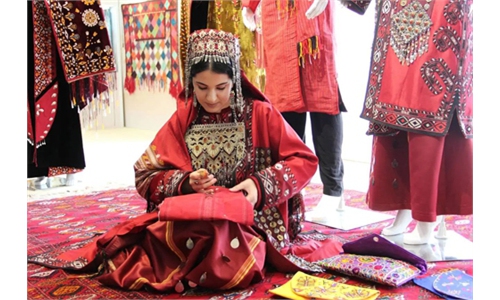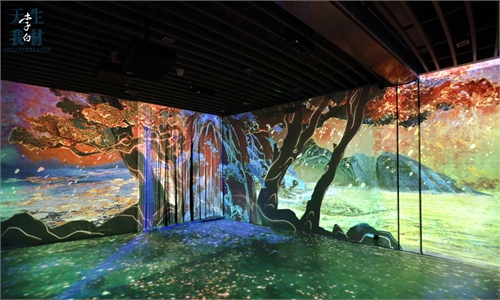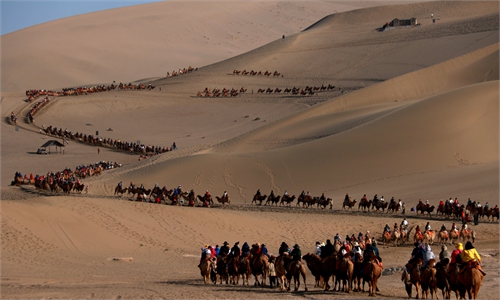ARTS / CULTURE & LEISURE
Mountain Trail of Infinite Longing: A journey through Tang Dynasty poetry
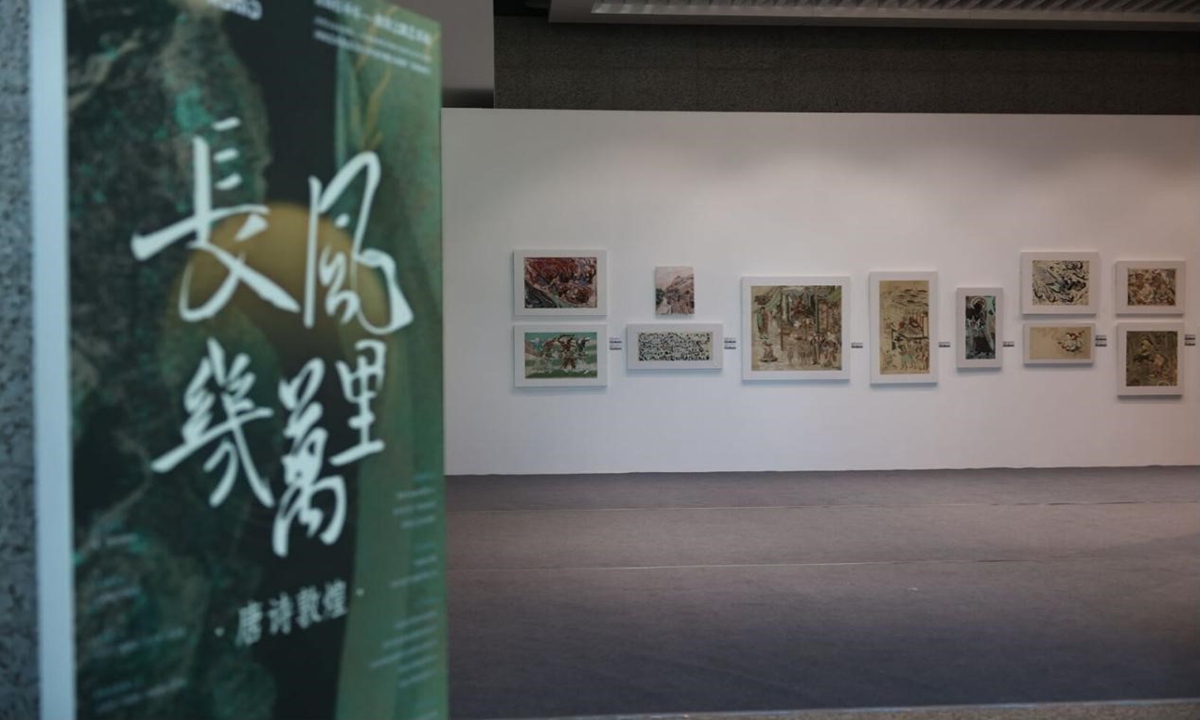
Photo: Courtesy of Chinese Academy of Arts
An exhibition of artworks related to poetry from the Tang dynasty(618-897), titled Mountain Trail of Infinite Longing, debuted at the Dunhuang World Exhibition & Convention Center on Friday, marking the fourth iteration of the Tang Poetry Road art exhibition series.
For the first time, the poetic essence of Tang poetry steps out of East China's Zhejiang Province and extends to Dunhuang in Northwest China's Gansu Province, initiating a new chapter of geographical dialogue.
The exhibition explores the evolution of Tang poetry from the past to the present, from the south of the Yangtze River to the frontier. It encapsulates the essence of the "long wind" of poetic expression, bridging the past with the Ming Dynasty (1368-1644) and infusing artistic creation with the vibrant spirit of border poems of Tang Dynasty. This exhibit seeks to expand the poetic realm into broader temporal and spatial dimensions, linking the historical with the contemporary.
This year's exhibition introduces a new chapter for the "Tang Poetry Road", integrating bold national sentiments and continuing the artistic features of Eastern poetic traditions. The exhibition is organized around four thematic sections: "Warriors", "Poets", "Monks," and "The northern barbarian tribes," which reflect the frontier origins of Tang poetry. Each section represents a distinct style of Dunhuang art, offering a vivid portrayal of the poetic emotions associated with each role.
Featuring over 180 works across nearly 20 artistic forms, including poetry, calligraphy, traditional Chinese painting, sculpture and environmental art, the exhibition utilizes new media methods like installations, videos and digital online galleries. It highlights contributions from numerous artists, immersing visitors in the perspectives of the four thematic sections and expanding their historical and cultural imagination. Notable works include Shao Wenhuan's photography series "Ten Thousand Years," depicting the grandeur of Yadan landscapes and starry skies, and Shen Linfeng's video installation "Sea of Time," which honors frontier soldiers through a 200-meter-long visual scroll.
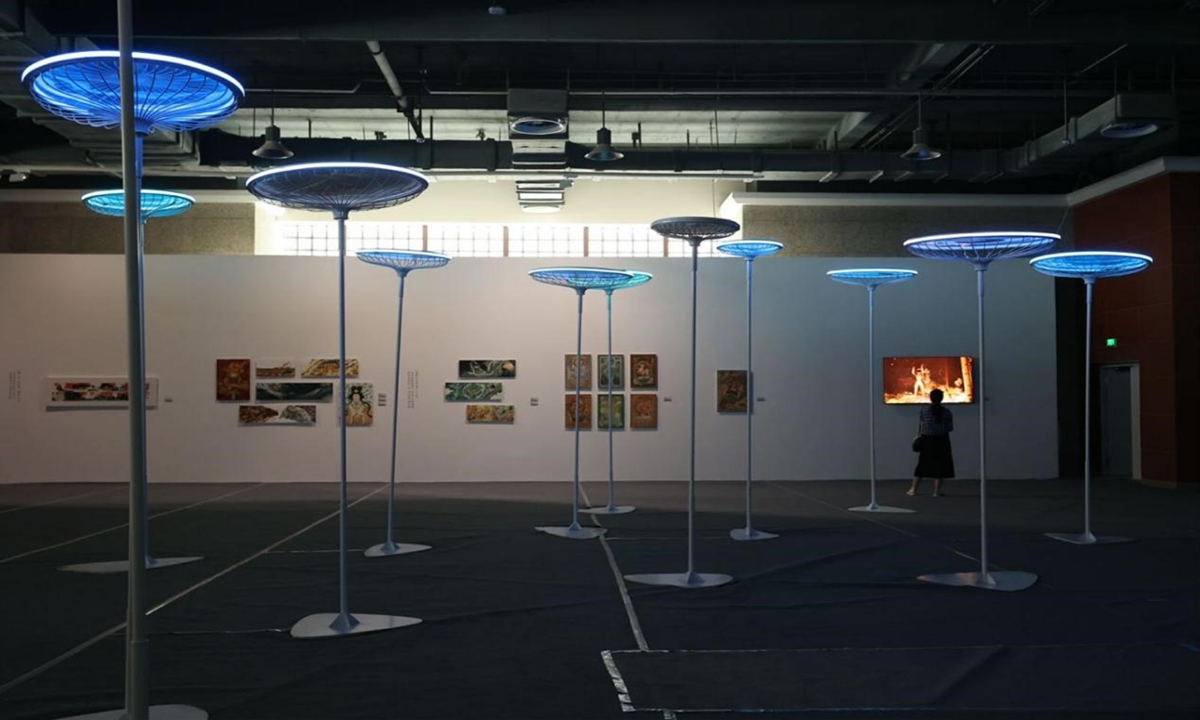
Photo: Courtesy of Chinese Academy of Arts
In addition to traditional artworks, the exhibition features installations and sculptures, such as Xu Ge's "Opening the Orient," which pays tribute to pioneering figures in ancient sculpture and traditional Chinese art. Xu's pieces use the sound of gravel to evoke the rhythm of ocean waves, creating a luminous sea within the exhibition hall and inviting viewers into a poetic dialogue.
Crossing thousands of miles, the artists unfold their thoughts about the border through Dunhuang, transcribing the insights and feelings from their fieldwork and "dancing" with the border in a multi-dimensional poetic sense.
The exhibition also includes selected pieces from the China Academy of Art's collection of murals copied from the Mogao Caves in Dunhuang by previous masters, offering spectators a glimpse into the origins and continuity of Chinese figure painting.
In reviving the poetic themes of the Tang Dynasty, the exhibition redefines the essence of frontier landscapes and Eastern origins, presenting a contemporary interpretation of ancient poetry. The poetic spirit endures, and a grand visual feast unfolds, showcasing the enduring vitality of Tang poetry.
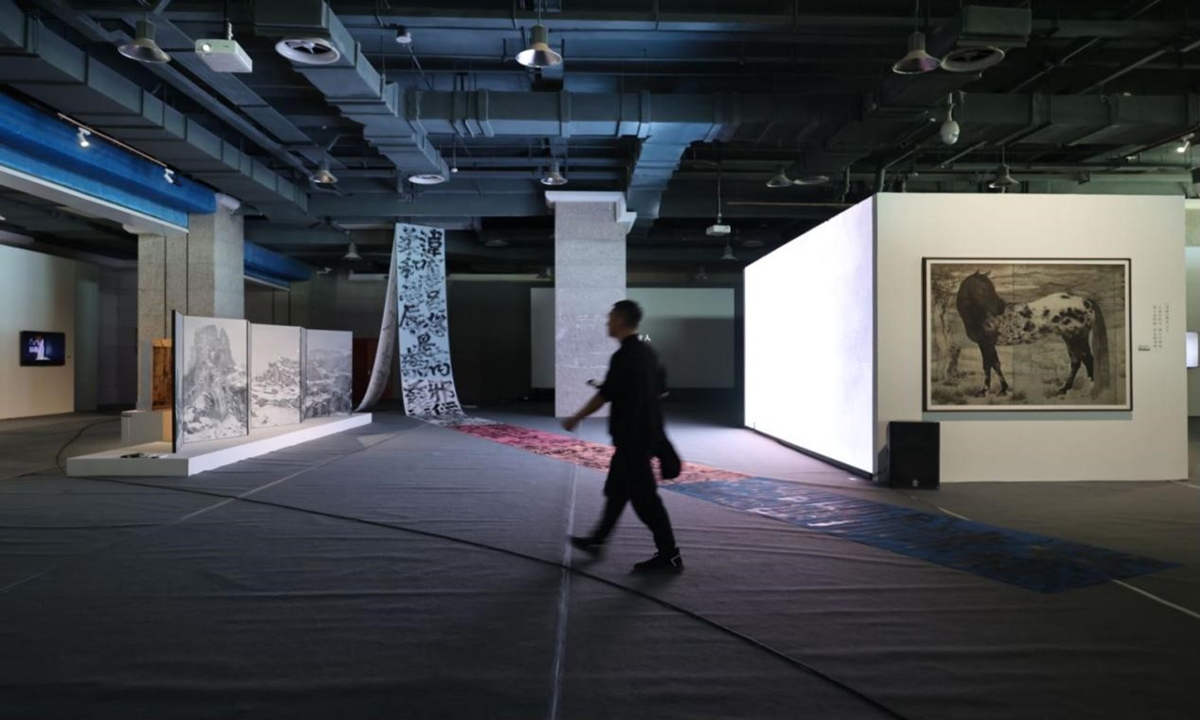
Photo: Courtesy of Chinese Academy of Arts
Modern people observe the ancients, and future generations observe us. By reviving the poetic themes of the Tang Dynasty, this exhibition redefines the essence of the frontier landscape and eastern origins, presenting a renewed contemporary interpretation of ancient poetry. Amid the emerging vitality, the poetic spirit endures, and a grand visual feast is gradually unfolding.
An academic seminar related to the exhibition is being held along with it. The seminar revisits and focuses on the fundamental issues of artistic creation, including poetry and visual arts. Additionally, the conference will discuss topics related to border poetry and artistic experience as well as the elegance of south of lower reaches of the Yangtze River versus the exotic Dunhuang.
The exhibition will remain open until October 23.
Global Times
